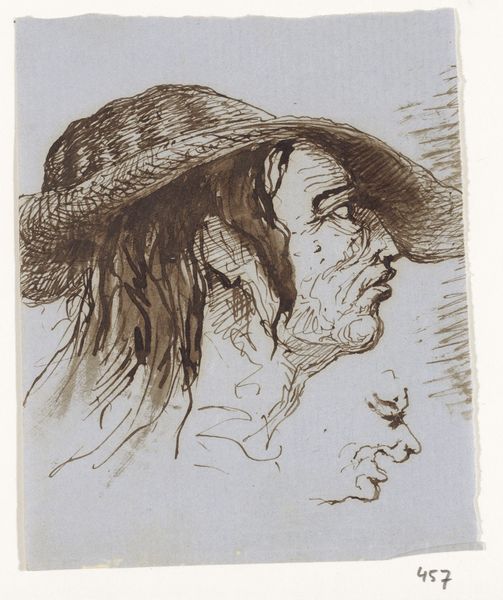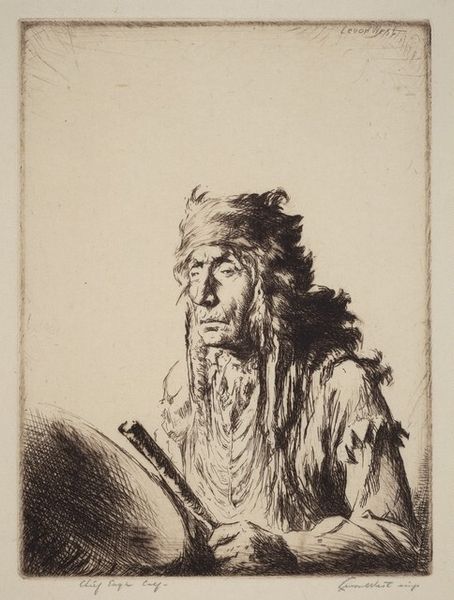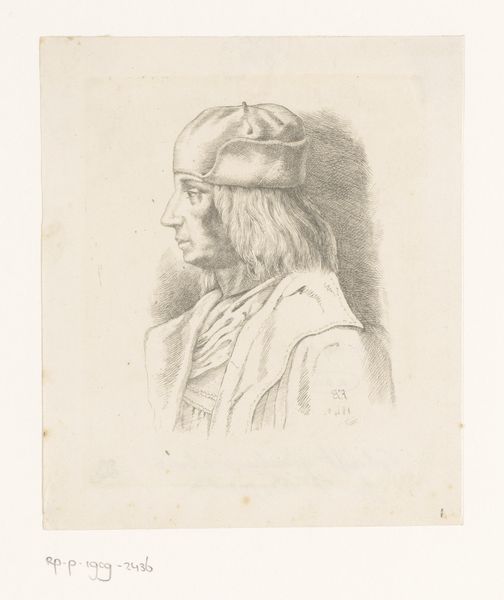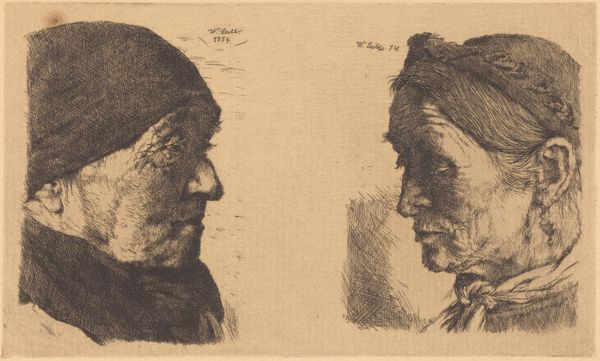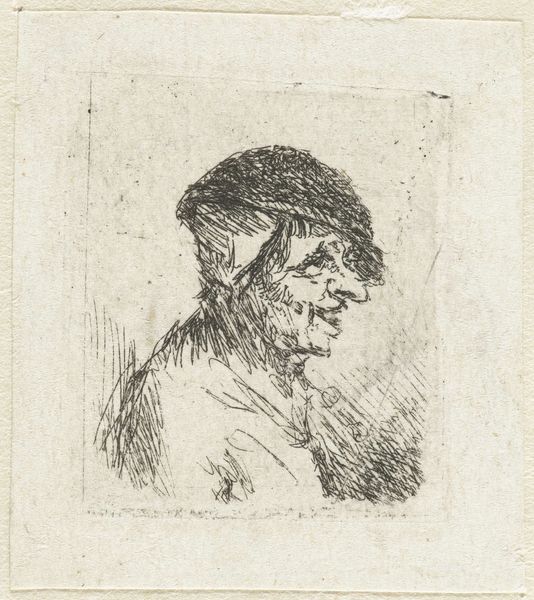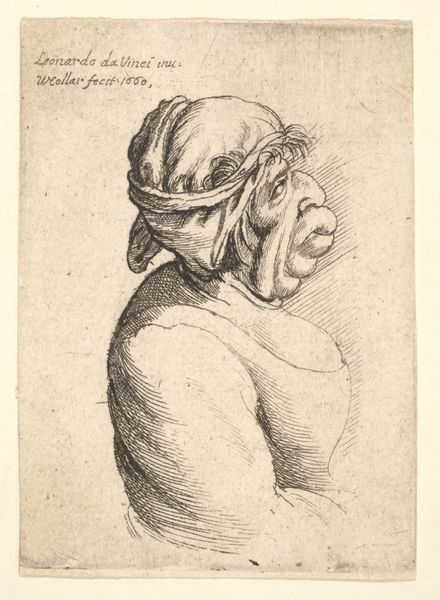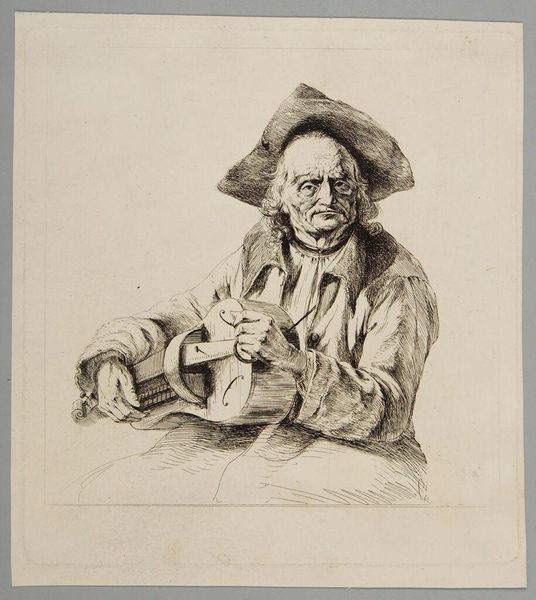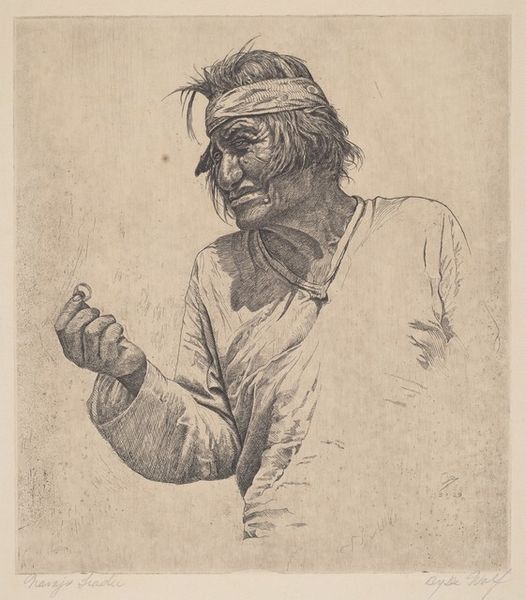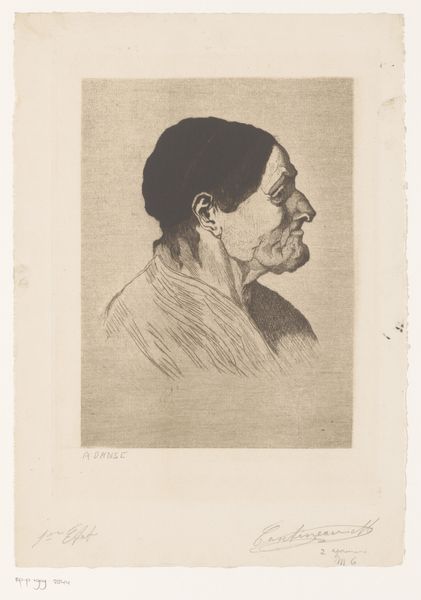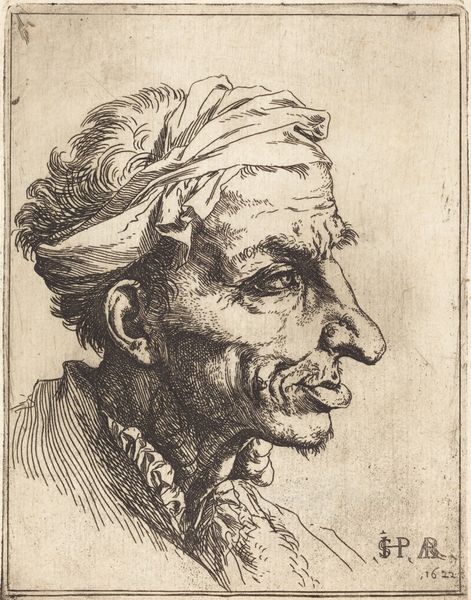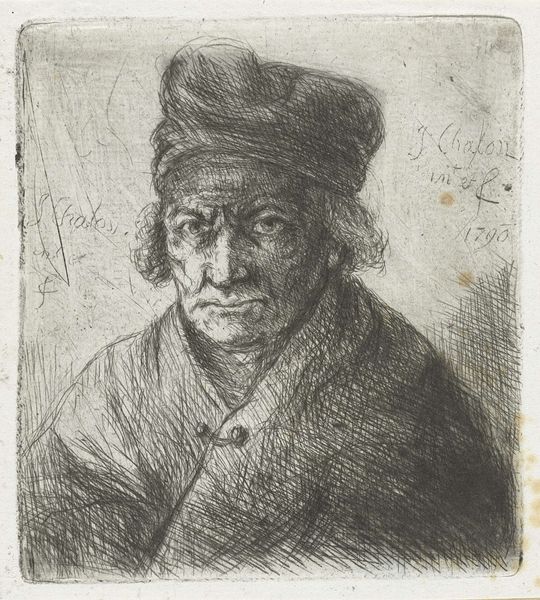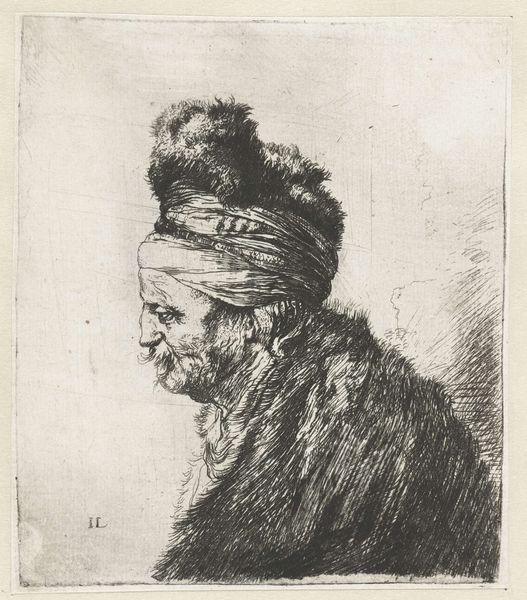
print, etching
#
portrait
#
pencil drawn
#
facial expression drawing
# print
#
etching
#
pencil sketch
#
charcoal drawing
#
portrait reference
#
pencil drawing
#
animal drawing portrait
#
portrait drawing
#
facial study
#
portrait art
Dimensions: plate: 150 x 150 mm sheet: 231 x 228 mm
Copyright: National Gallery of Art: CC0 1.0
Editor: This etching by Carl Oscar Borg, called "The Navajo," dates back to 1928. The detail is incredible. There is a powerful dignity in his expression. How would you interpret this work? Curator: It speaks to cultural memory. Notice the lines etched deep into the subject's face – each one a symbol of experience, a map of his life lived. What stories do you imagine those lines tell? Editor: Hardship, resilience perhaps? And the way he wears his hair, almost unbound, it feels like a statement of freedom. Curator: Exactly! Hair often carries symbolic weight, particularly in Indigenous cultures. Borg captures a specific cultural moment. But consider also the tradition of portraiture itself. How does it interact with its subject, especially across cultural divides? The necklace, earring and headband give insight into Navajo cultural traditions and the artist's interpretation. Editor: So, you’re saying it's not just a likeness, but also Borg's interpretation and how he chooses to depict and engage with another culture’s symbolism? Curator: Precisely. Look at how he renders the details, from the wrinkles to the jewelry. He’s attempting to capture not just an individual but an identity steeped in tradition, translated through his own artistic lens. What resonates most with you? Editor: Definitely the eyes. There's a depth there that invites contemplation on both the individual and the broader history of his people. Thank you, I’ll think about portraits quite differently from now on. Curator: And I will reflect more on how continuity across culture can be so delicately – and sometimes powerfully – portrayed.
Comments
No comments
Be the first to comment and join the conversation on the ultimate creative platform.
